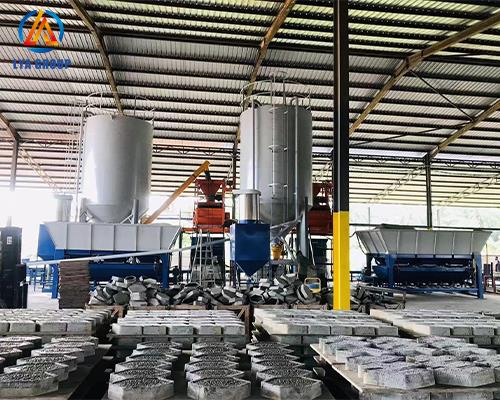Wet concrete production line
News 2024ŚĻī3śúą14śó• 154

A wet concrete production line is a set of equipment and processes used to produce wet concrete continuously and efficiently. Wet concrete production lines are commonly used in the construction industry to produce large amounts of concrete for various construction projects.
The wet concrete production line typically includes several pieces of equipment, such as a concrete mixer, a batching plant, a conveyor system, and a set of molds. The concrete mixer is used to mix the concrete ingredients, while the batching plant is used to weigh and mix the ingredients in the correct proportions. The conveyor system is used to transport the wet concrete from the mixer to the molds, where it is shaped into the desired form.
The wet concrete production line can be configured in different ways depending on the specific requirements of the project. For example, a production line can be designed to produce a specific type of concrete mix, such as high-strength concrete, or it can be designed to produce a variety of different mixes. The production line can also be designed to produce concrete products of different sizes and shapes, such as concrete blocks, pavers, or precast panels.
One of the main advantages of a wet concrete production line is the ability to produce large amounts of concrete continuously. This can help to improve the efficiency of the production process and reduce labor costs. Additionally, the use of automated equipment and processes can help to improve the consistency and quality of the concrete mix.
Overall, a wet concrete production line is a valuable asset for construction companies that require a continuous supply of high-quality concrete for their projects. By investing in a wet concrete production line, companies can increase their production capacity, improve efficiency, and reduce costs.
